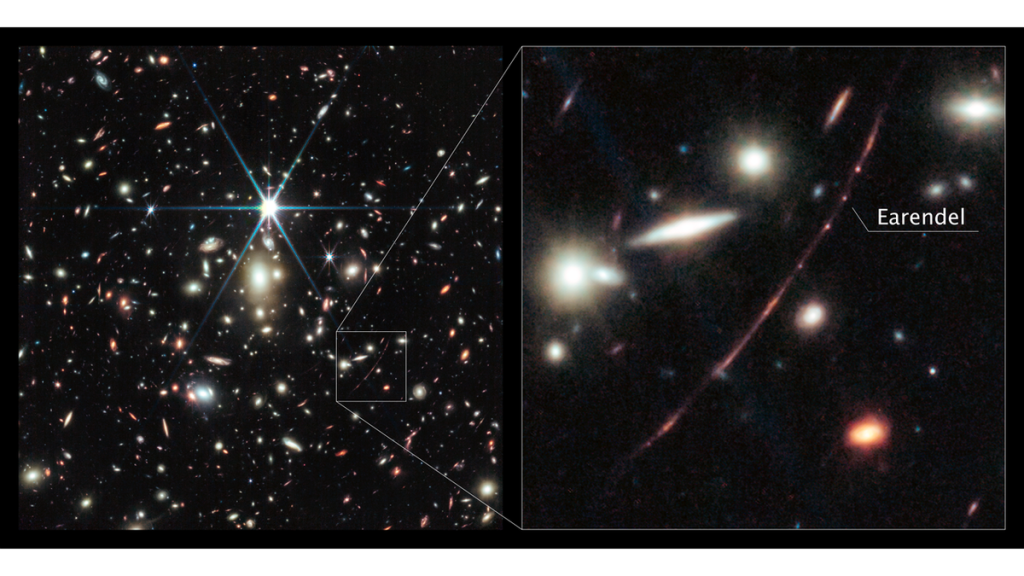In March 2022, the Hubble Space Telescope detected the most distant star ever seen in the cosmos.
Now, the James Webb Space Telescope (JWST) has captured an even more detailed glimpse of this ancient celestial body, revealing it to be a massive B-type star that’s more than twice as hot as the sun and roughly a million times brighter. The star is known as WHL0137-LS — nicknamed Earendel — and resides in the Sunrise Arc galaxy. Light we detect now from Earendel began its journey from the star 12.9 billion years ago, which means the star began emitting its rays less than a billion years after the Big Bang, according to Live Science’s sister site Space.com. Because every point in the known universe has been expanding like a cosmic balloon since then, Earendel now lies 28 billion light-years from Earth.
The telescopes were able to detect this extremely distant star due to its position behind “a wrinkle in space-time” created by a massive cluster of galaxies that’s bending and magnifying Earendel’s light through a phenomenon called gravitational lensing, according to a statement from NASA.
Related: 32 jaw-dropping James Webb Space Telescope images
Image from James Webb Space Telescope of massive galaxy cluster WHL0137-08. (Image credit: NASA)
“The galaxy cluster, located between us and Earendel, is so massive that it warps the fabric of space itself, which produces a magnifying effect, allowing astronomers to look through the cluster like a magnifying glass,” the statement said.
Peering through this gravitational lens, scientists captured the crimson rays shining off Earendel, as well as a kaleidoscope of star clusters in the Sunrise Arc. The small dots on either side of Earendel are two images of another ancient star cluster estimated to be at least 10 million years old, which “shows us how the globular clusters in our own Milky Way might have looked when they formed 13 billion years ago,” the statement said. The image also revealed what may be a cooler, redder cosmic companion star that orbits Earendel.
The JWST’s primary mirror has six times the light-gathering power of the Hubble telescope, which enables it to capture longer and dimmer light wavelengths. As a result of this technology, JWST has helped make countless discoveries about our universe during its first year of operations — from the spiral “Phantom Galaxy” 32 million light-years from Earth to clear traces of carbon-based molecules in the Orion Nebula. Scientists have also detected other distant stars in the universe, but Earendel remains the farthest star on record.
“The discoveries have opened a new realm of the universe to stellar physics, and new subject matter to scientists studying the early universe, where once galaxies were the smallest detectable cosmic objects,” the statement said. “The research team has cautious hope that this could be a step toward the eventual detection of one of the very first generation of stars, composed only of the raw ingredients of the universe created in the big bang — hydrogen and helium.”

